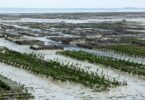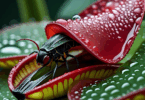Mosses might seem simple, but these small plants have a remarkable life cycle that showcases their adaptability and resilience. Unlike flowering plants, mosses lack roots, internal vessels, and seeds. So how do they thrive? This blog will walk you through the fascinating processes of water absorption, photosynthesis, and reproduction in mosses, highlighting their unique strategies for survival.
How Mosses Absorb Water and Nutrients
Mosses have developed innovative ways to absorb water and nutrients essential for their survival. Here are the key methods they use:
Absorbent Surfaces: Some mosses have highly absorbent surfaces that draw moisture and minerals from the water flowing over them. This allows them to take advantage of even the smallest amounts of water.
Capillary Action: Mosses utilize a principle called capillary action, which allows them to pull water and nutrients up through their rhizoids. This happens when the adhesive force of water molecules to the rhizoids is stronger than the cohesive force between the water molecules. Think of it like a paper towel soaking up spilled water—it’s a natural process at work!
Photosynthesis
Once water and nutrients are absorbed, mosses begin the process of photosynthesis, a vital function for their growth. Here’s how it works:
- Ingredients: Instead of flour and sugar, moss uses carbon dioxide and water as its main ingredients, with sunlight serving as the energy source.
- The Process: In the presence of sunlight, moss converts these ingredients into sugar and oxygen. The sugar helps the plant grow, while the oxygen is released back into the atmosphere.
Reproduction
Moss has a fascinating way of reproducing, ensuring its survival through both sexual and asexual methods.
Sexual Reproduction
Gametophyte Stage: The leafy stems you see are the gametophytes. Female gametophytes develop vase-shaped structures called archegonia that produce eggs, while male gametophytes develop antheridia that produce sperm.
Fertilization: Sperm swim through water to fertilize the eggs in the archegonia, which is why moss thrives in moist environments.
Sporophyte Development: After fertilization, a sporophyte develops from the female plant. This structure has a tall stalk supporting a brown capsule, which produces spores.
Spore Release: When the capsule dries and matures, it releases spores into the wind. If a spore lands in a moist environment, it germinates and grows into a new gametophyte.
Asexual Reproduction
Moss can also reproduce asexually, skipping the complex fertilization process. With enough moisture, pieces of moss can break off, carried by wind or water, and grow into new plants. This method allows mosses to spread quickly and effectively in their habitats.
Mosses are more than just green carpets on the forest floor; they are vital components of our ecosystem. Their unique methods of water absorption, nutrient acquisition, and reproduction allow them to thrive in various environments. Understanding the life cycle of moss helps us appreciate the intricate connections in nature and the resilience of these small but mighty plants.







